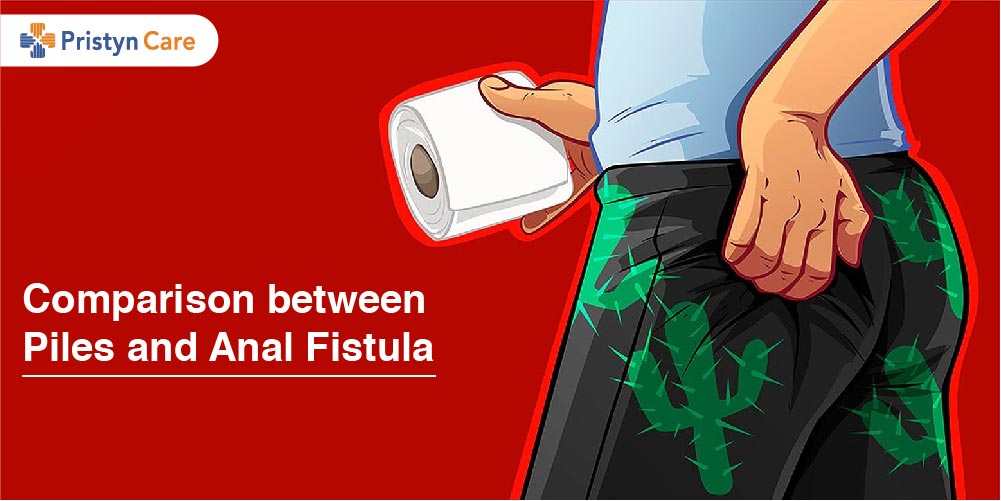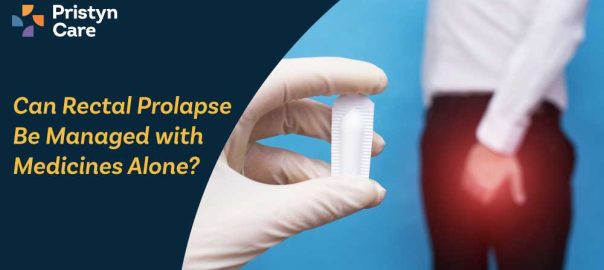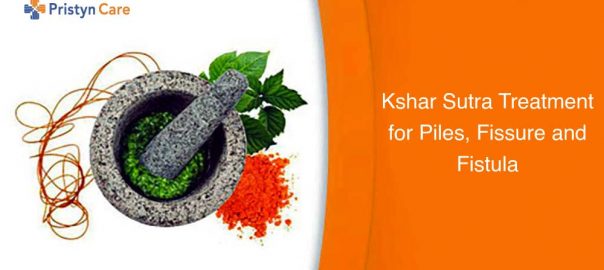![]() Views: 12,843
Views: 12,843
Differnace between Piles and Anal Fistula
Blood in stool, painful bowel movements or discomfort in the anal area does not mean that one has piles. Yes, these are the main symptoms of piles.
Dedicated Support at Every Step!
Our Doctors are available 24 hours a day, 7 days a week to help you!
But, anal fistula also has similar symptoms. Most people are not even aware of other anorectal diseases. The blog shows a comparison between piles and anal fistula.
Table of Contents
Differences and Similarities between Piles and Anal Fistula
The Disease- Piles occurs due to swelling and inflammation of blood vessels in the anal canal. Anal fistula caused because of infection in the anal canal. Piles can be external or internal. Anal Fistula is always internal.
Symptoms- Common symptoms of piles are swelling and pain in the anal area, generally around the anal opening. The symptoms of anal fistula include fever, pain, and discharge of pus or blood from the anal opening.
Puss Discharge- There is no discharge in case of piles. The patient may see blood on toilet paper or in the stool. In the case of anal fistula, the patient has waterly, purulent, pus-like discharge from the anal opening.
Opening of Sac- There is no external opening in case of piles. For anal fistula, there are two openings present on both the ends. One of them is around the anal opening.
Causes- Chronic cough, unhealthy eating habits, and lifestyle generally cause piles. On the other hand, obesity, Crohn’s disease, the prevailing case of abscess cause fistula. Some factors like history of constipation and sitting for long hours can cause both piles or anal fistula.
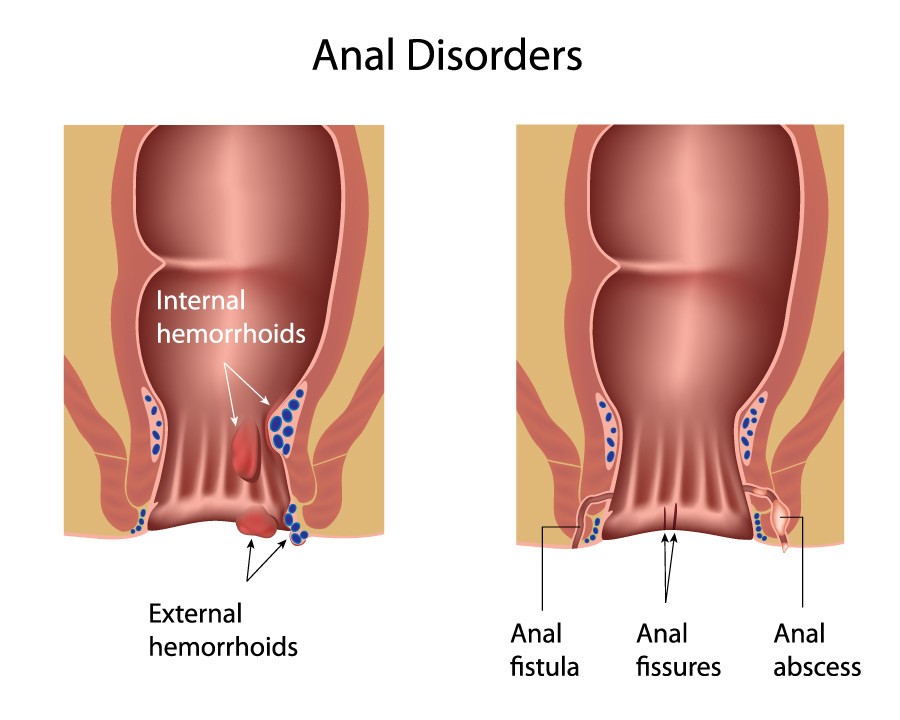
No Cost EMI, Hassle-free Insurance Approval
Differnce between Piles and Fistula
| Basis | Piles | Anal Fistula |
| Definition | The swollen blood vessels in the anal canal, which occurs due to chronic constipation. | Fistula or Anal Fistula is the small opening in the anal canal, it is kind of cavity filled with pus. |
| Symptoms | Firstly piles are not noticed as they are minimal pain, but in their later stage, there is swelling, blood in stool and soreness in the anal area. | This is also a severe anorectal problem, as in this the pus is discharge from the anal area. |
| Causes | A chronic cough, constipation for a long time, pregnancy. | Obesity, people suffering from Crohn's disease, sitting in one place continuously, constipation. |
| Prevention | Intake of liquids and diet with high fiber work best, even they are advised not to exert too much pressure at the time of passing stools. | Maintaining hygiene habits while using toilets, is the best way of preventing the infections in the anal canal. |
Prevention
In both the cases of Piles and anal Fistula, the patient gets the advise to take a lot of liquids and water and eat a healthy, high-fiber diet. This leads to the formation of a soft stool and thus prevents extra pressure at the time of passing stool.
In cases of such diseases, passing a hard stool can be very difficult and painful for the patient. The patient should maintain hygiene at the time of using washrooms. Unhygienic conditions can lead to more complications such as infections with the existing disease.
Treatment
The early stages of piles, on diagnosis, is curable with medications and a healthy lifestyle and eating habits. Although, as there are no visible symptoms in the initial stage of the disease, the patient does not even know they have the disease. The patient starts experiencing symptoms in the later stages of the disease when hemorrhoid has increased in size.
Hemorrhoid needs to be removed surgically in the later stages of the disease. In the case of anal fistula, medication can cure the disease on early diagnosis. But if not, the infection in the anal canal can increase. MRI, Ultrasound, or other tests are done then to check the extent and spread of the disease before surgically treating it.
Are they both Located in the same place?
Both piles and anal fistula are anorectal diseases. Both affect the lower rectum or anal area. But are they both found in the same place? Where are they found?
Piles or Hemorrhoids are the swollen veins in the lower rectum part, generally the anal area. Piles can be either internal or external.
Internal Piles are generally be found 2-4 cms above the anal opening. External piles are right outside the anal opening, at the edge of the anus. The cases of internal piles are more common than the external one. The size of piles varies in all the cases.
Fistula can be in different regions or parts of the human body. Unlike piles, they are not just found in the anal area.
Fistula can be in other parts of the body such as between the neck and throat, between the colon and the surface around, between an artery and vein, etc. An anal fistula is an infected tunnel between the anus and the perianal skin. The external opening to this canal is the anal opening.
Piles or Hemorrhoids
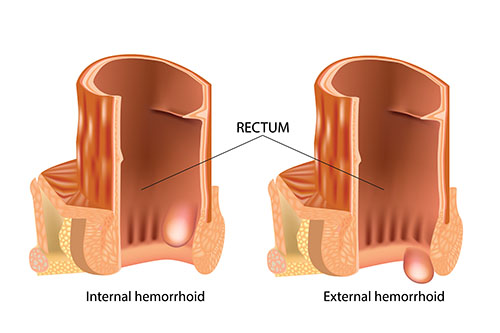
Piles are also known as hemorrhoids. In this disease, there is swelling in the blood vessels in the anal canal.
There are four stages of the disease. In the first stage, the person experiences no symptoms. There is just slight inflammation in the inner lining of the anus. No visible symptoms are there in this stage.
In the second stage, the hemorrhoids increase in size. The lump protrudes out from the anal opening on exerting pressure to it, during bowel movements. The lump goes back inside on its own after passing stool.
In the third stage, the lump goes back using fingers after the bowel movements.
In the fourth stage, the lump remains permanently outside and cannot be pushed back inside. The patient has to endure a lot of pain while sitting or lying down as hemorrhoid hurts. People fail to recognize the condition until further stages where the lump increases in size as piles are not painful in the initial stages.
Symptoms
- A hard lump can be felt around the anus, generally around the anal opening.
- Red blood spots on toiled paper or with the stool.
- Swollen, sore, itchy, irritated and red area around the anal area, especially around the anal opening.
- Pain during bowel movements in the later stages of the disease.
- Anal bleeding or discharge
- Infection in or around the anal area.
- Fecal incontinence.
MBBS, Diploma in Radio Diagnosis & MD-TB & Respiratory Diseases
FREEConsultation Fee
Causes of piles
- Sitting for continuous hours every day.
- Chronic Constipation or diarrhea.
- Pregnancy
- Spending a lot of time on the toilet seat.
- Heavyweight lifting.
Treatment
Medication, a healthy diet and lifestyle changes can help cure piles in the initial stages. But when the lump increases in size, it cannot be treated with medication.
It has to be removed surgically. The patient has several options for the treatment such as Rubber band ligation, injection, hemorrhoidectomy, hemorrhoid stapling or laser surgery. The doctor suggests the patient what kind of surgery is more suitable for them. Among them, laser treatment is the safest, easiest and quickest way to get rid of piles.
The laser treatment provides a permanent cure for piles. This procedure causes minimal pain and generally takes less than an hour for the treatment. The patient can go back home the same day after the treatment. There are minimal cuts or incisions so there is no chance of infection.
This modern-day treatment has an easy cure for piles which gives instant relief to the patient.
Anal Fistula
Anal fistula is a medical term used to define the infected tunnel which develops between the anus and the perianal skin. One end of the fistula is towards the anal opening.
A person having the problem of anal abscess earlier is generally diagnosed with fistula later. Other serious diseases like Crohn’s Disease, cancer, warts, radiations, trauma, etc can also cause a fistula. An obese person who spends a lot of time sitting and lacks physical activities in daily life generally complains of fistula at some point.
Fistula is more common in adults as compared to children. Patients with the case of perianal abscess are on the high risk of getting anal fistula.
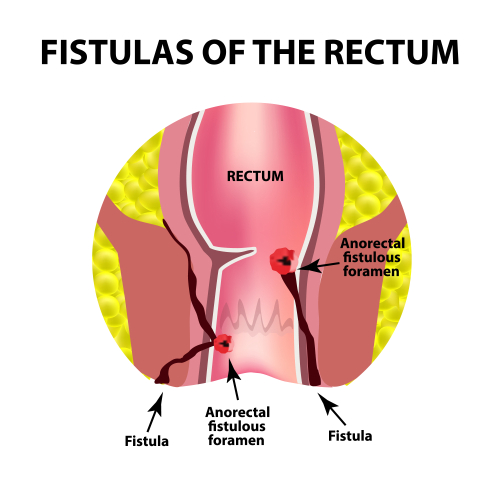
Symptoms
- Pain, swelling, itching, irritated or sore skin around the anus, especially the anal opening.
- Blood discharge
- Painful bowel movements. The patient may also complain of pain while urinating in the worse condition of the disease.
- Fever and fatigue.
- Foul smelling discharge from the anal opening.
Causes
- Previously prevailing anal abscess.
- Crohn’s Disease
- Sexually Transmitted Diseases
- Trauma
- Tuberculosis
- Cancer
- Diverticulitis.
Treatment for Fistula
The early stage of anal fistula is treatable with medication and precautions in daily life. In cases of worse, serious stages of the disease, the doctor firstly suggest tests like MRI, Endoscopy, Ultrasound or Fistulagraphy to have more clarity on the disease.
After that, the patient has several options for surgical removal of fistula including Fistulotomy, Advancement Rectal Flap, LIFT, Seton Placement, Muscle flap, Laser surgery, etc.
Among them, laser treatment is the safest, easiest and quickest cure for fistula. The laser treatment is the permanent cure for fistula. The procedure inflicts minimal pain and generally takes less than an hour for the treatment.
The patient can go back home the same day after the treatment. There are minimal cuts or incisions so there is no chance of infection. This modern-day treatment has an easy cure for fistula which gives instant relief to the patient.
Overview - Piles and Anal Fistula
Blood or pus discharge, constipation, pain, irritation, swelling, redness or soreness around the anal area are the symptoms to many anorectal diseases. Unhealthy eating habits, an inactive lifestyle of the modern world and insufficient intake of fluids has to lead to a drastic increase in cases of anorectal diseases. Do not ignore Such symptoms.
The patient should never take any medication or try home remedies for such diseases before visiting a doctor. Diseases around the anal canal are serious and never ignore them. Such diseases can also be just a symptom of a major disease like Cancer. Consult a doctor to the soonest when you observe such symptoms.
Laser treatment can provide instant relief from such troubles. There will be minimal cuts, stitches or major surgical methods involved. The patient is good to go home the same day after the surgery. Waste no more time and get yourself an appointment to the soonest to get relief from the discomfort and give yourself a healthy life!
Also Read:

